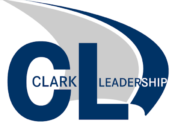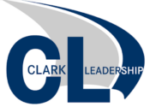Recruiting and Retaining Millennials
This article provides a brief overview of a key leadership activity relating to the staffing of your organizations with qualified and capable individuals who will embrace your purpose and in-turn meet the needs of your various stakeholders. It is taken from a Clark Leadership paper “Recruiting and Retaining Millennials” and is available to readers as outlined below.
By Mike March
Recruiting and Retaining Millennials
Great leaders are continuously scanning the horizon for both opportunities and threats. The current labor market presents both. Additionally, the dynamics of hiring and retaining Millennials, specifically, offers an entirely new set of challenges.
When Clark Leadership works with clients as they attempt to hire qualified, well-aligned individuals, we stress the need for leadership to begin with understanding the clear purpose their organization fulfils. The clarity of this purpose will either align with qualified candidates or it will not, and it is best to determine this during the interview. Millennials are driven by knowing their work matters and that they are fulfilled, so having a defined organizational purpose is important to them.
In addition, their new generational style of work, capacity for development, yearning for opportunities, and many other traits are so wildly different from the previous generations that organizations are faced with a choice. Do we as leaders develop incremental change to our employee hiring and onboarding process to initially accommodate Millennials with the long term goal of waiting until they understand how things are done in the “real work world”, or do we acknowledge the extent of this hiring dynamic and work on deeper change that adapts our organizations to the realities of this generation?
Millennials are a large demographic. Their entry into the work force is fundamentally going to replace the baby boomers, and many employers are not sure what motivates this new generation or how to integrate them into their organizations.
This new generation of professionals are consumers of the workplace. They “shop around” for the job opportunity that best aligns with their needs and goals. Make no mistake, they place a great deal of emphasis on the skills and abilities of their bosses. The odds of them staying with your organization goes up dramatically with the quality and level of tech utilization of their bosses.
This is the most-worldly generation in our history. They have grown up with a portal to the most information available to them, more than any generation before. As such, this explains in part that after compensation, a clear organizational direction is the next most important aspect of their employment. It does not work to tell them to do something because it is how it was always done; they need to understand why.
The majority of Millennials look for a current website and active social media engagement in their initial search for a position. Unlike the hiring processes of the past, the ability to complete a shortened job application on a smartphone is a big plus. The formality of completing a written application and mailing it to the hiring manager is long gone. Furthermore, once they apply, stay in touch with them! They will not wait around or be left hanging when there are multitudes of other opportunities. This hiring process diverges from the historical way many organizations conduct employee searches. To ensure its success, it must be driven, supported, and measured by leadership.
These are but a few areas to contemplate when looking to hire and retain Millennials. At Clark Leadership, we have developed a paper that outlines some of the most important aspects in this core organization effort. Geared toward leaders of organizations, it provides a conceptual framework for developing an approach to fill positions with younger individuals who have a better chance of contributing to an organization and developing some longevity. It also includes some survey data and ideas on interview techniques, onboarding, flexible benefits, retention activities, and other topics.
Bottom line, not all hires are going to be matches and become superstars. However, this latest cohort to enter the workforce is systemically different from previous generations to the extent that a high-level review of the process of attracting and retaining Millennials is required. And this is the responsibility of the leaders of your organization.
For a free copy of the paper “Recruiting and Retaining Millennials”, contact Kim at Kim@clarkleadership.com.





